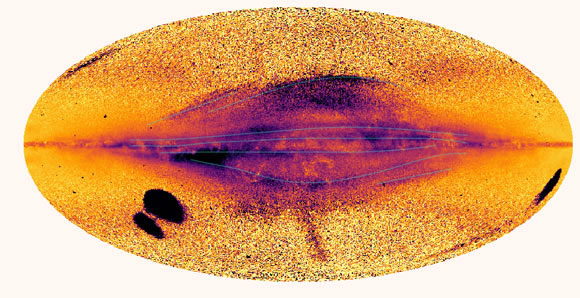A new map of the galaxy containing Earth, the Milky Way, has revealed a series of strange structures resembling arms, ancient remnants of violent events.
According to Sci-News, these structures appear as a series of elongated ribbons, swirling around the Milky Way in its spiral form. The research team, led by Dr. Chervin Laporte from the Institute of Space Science at the University of Barcelona (Spain), describes them as “fossil arms” of the galaxy.

Milky Way Map – (Image: Gaia Satellite/ESA)
The authors suggest that these structures were formed from ancient disturbances caused by satellite galaxies surrounding the “monster” Milky Way, a massive galaxy that houses our Solar System and has a tumultuous history with numerous interactions with other galaxies.
Currently, the Milky Way is believed to be interacting with the Sagittarius Dwarf Galaxy. In a more distant past, it interacted with the Gaia Sausage, a small galaxy that has been torn apart and scattered throughout the outskirts of the Milky Way.
One of the “fossil arms”, known as the Anticenter Stream, has been found to contain stars over 8 billion years old, too old to belong to Sagittarius, thus considered evidence of the aforementioned interaction with Gaia Sausage.
The leading hypothesis is that during these interactions, material from the Milky Way was pulled out, combining with material from the shattered small galaxies to form these strange arms, fibrous structures that hold a tumultuous history.
According to the authors, this discovery adds an intriguing piece to the puzzle of the Milky Way’s formation, a monster that is thought to have swallowed 16 other galaxies to reach its current size. The new study has just been published in Monthly Notices of the Royal Astronomical Society: Letters.


















































